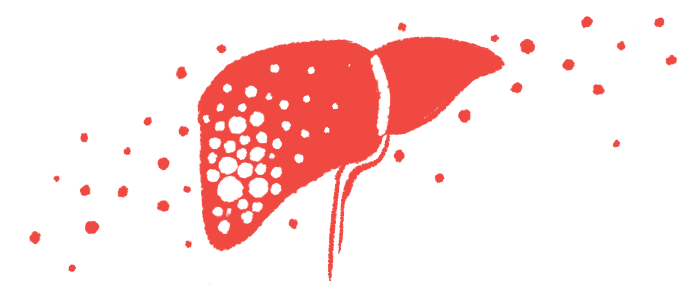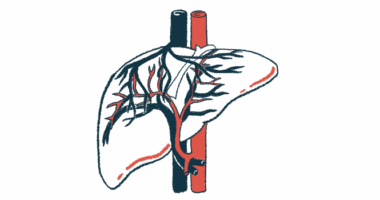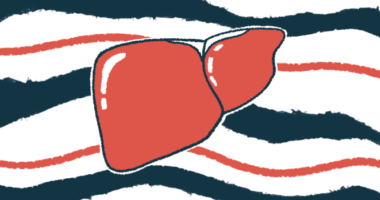Noninvasive liver test may help diagnose biliary atresia: Study
Study finds 97% of infants with biliary atresia using transient elastography

Transient elastography, a noninvasive test that uses ultrasound to detect liver stiffness, may help to differentiate biliary atresia from other underlying diseases in infants with cholestasis, or slowed bile flow, according to a study in India.
Bile is a digestive fluid produced in the liver and transported into the intestines. Cholestasis can be caused by a number of conditions, including biliary atresia, and a correct early diagnosis can allow appropriate treatment.
In the study, researchers correctly identified 97% of all infants with biliary atresia by adding ultrasound findings of the small gallbladder (where bile is stored) to a liver stiffness cutoff value.
In settings with limited resources where liver biopsy and intraoperative cholangiogram — invasive tools commonly used to diagnose biliary atresia — may not be available, transient elastography in combination with ultrasound of the small gallbladder can be a good screening tool for biliary atresia, researchers note.
The study, “Utility of Transient Elastography in Differentiating Biliary Atresia from Other Causes of Neonatal Cholestasis: A Prospective Observational Study,” was published in the Journal of Clinical and Experimental Hepatology.
Biliary atresia is a rare liver disease that affects infants and is characterized by the absence or blockage of bile ducts, or the tubes that carry bile from the liver to the intestines, impairing bile flow. This leads to toxic bile accumulation in the liver, causing liver damage that can progress to liver scarring, or fibrosis, and eventual liver failure.
Early diagnosis crucial for successful outcome of Kasai procedure
“Early diagnosis of BA is crucial for a successful outcome of Kasai portoenterostomy,” the researchers wrote. The Kasai procedure is a surgery to create a new path for bile to flow to the intestines, thereby restoring bile flow, and is the disease’s first-line treatment.
Biliary atresia diagnosis commonly involves invasive procedures, including a surgical procedure called cholangiogram and liver biopsy. Transient elastography allows the noninvasive assessment of liver fibrosis by measuring liver stiffness.
To learn more about the utility of transient elastography to diagnose biliary atresia, researchers in India analyzed data from 135 babies younger than 1 year, including 68 with biliary atresia and 67 with cholestasis due to other causes.
Infants with biliary atresia most commonly had increased spleen size and pale stools, while the other children experienced itching, seizures, and growth issues.
Moreover, infants with biliary atresia had significantly higher levels of a liver damage marker called gamma-glutamyl transpeptidase, and were significantly more likely to have a small gallbladder (67.9% vs. 11.9%).
Additionally, infants with biliary atresia had a significantly greater liver stiffness measurement (LSM), as assessed by transient elastography (19.4 vs. 12 kilopascals, or kPa), with a significantly higher proportion showing significant liver fibrosis on biopsy (94% vs. 50%).
Higher liver stiffness measurement associated with more severe fibrosis
Further analyses showed higher LSM was significantly associated with more severe fibrosis.
The researchers then used a statistical measure, called area under the curve, to assess how well LSM could be used to distinguish between children with biliary atresia and those without the disease. An LSM value higher than 13.1 kPa was able to do that with an accuracy of 73.6%, a sensitivity of 75%, and a specificity of 61.2%.
A test’s sensitivity is its ability to correctly identify those with a given condition, while specificity refers to the ability to correctly identify those without it.
The cutoff value of LSM to accurately diagnose biliary atresia increased with age, from 10.45 kPa for babies younger than 60 days (about 2 months) to 16.5 kPa for those between 91 days and 120 days (about 3 to 4 months).
When ultrasound findings indicating a small gallbladder (measuring less than 19 mm) were added to the model, the test’s sensitivity increased to 97%, although specificity remained low (52.2%).
“LSM cutoffs can be used to suspect BA and to differentiate it from other causes of [neonatal cholestasis] with a fair degree of certainty (sensitivity 75%),” the researchers wrote, adding “the sensitivity becomes almost perfect by adding ultrasound finding of a small gallbladder to LSM and can be used as a screening tool for BA.”
“Larger studies are warranted to validate the results,” they concluded.








